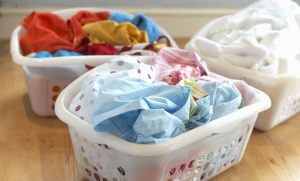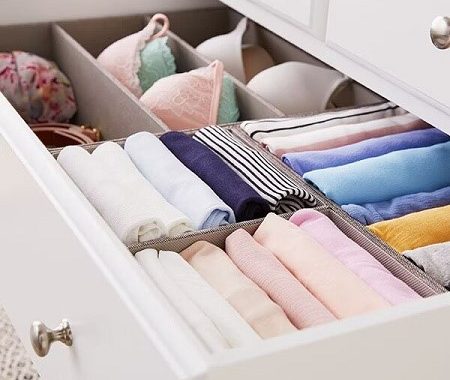How to Master Laundry Management at Home
Laundry is an indispensable chore in any household, and knowing how to manage it efficiently can make a significant difference in your daily routine. In this guide, we will delve into the art of how to manage laundry at home, offering practical tips, expert insights, and time-saving techniques to help you conquer this essential task with ease. Whether you’re a seasoned laundry pro or just starting to navigate the world of washing and folding, this resource will equip you with the knowledge and skills to streamline your laundry process and keep your clothes fresh and clean.
How To Manage Laundry At Home
1. Sorting Smarts

Prioritize Sorting: Begin by sorting your laundry into categories. Group clothes by color, fabric type, and care instructions. This approach will help you avoid color bleeding or fabric damage.
Use Sorting Bins: Invest in sorting bins or hampers to make the process easier. Label them with categories to encourage everyone in the household to sort their laundry.
2. Stain Removal Secrets
Treat Stains Promptly: As soon as you spot a stain, address it. Quick action often means the difference between success and a permanent mark.
Learn Stain Removal Techniques: Research and learn effective stain removal methods. Whether it’s wine, grease, or ink, the right technique can save your clothes.
3. Efficient Washing
Load Size Matters: Don’t overload the washing machine. It can lead to ineffective cleaning and strain on the machine.
Use the Right Settings: Familiarize yourself with your washer’s settings. Different fabrics require different water temperatures and cycle lengths.
4. Drying Done Right
Air Dry for Delicates: Hang delicate items to air dry, preserving their quality.
Use dryer balls. They reduce drying time and wrinkles, saving energy.
5. Folding and Organization

Fold neatly: neat folding minimizes wrinkles and saves space in drawers.
Store by Category: Arrange your clothes by type, making it easier to find what you need.
6. Manage Laundry Accessories
Keep It Stocked: Ensure you have enough detergent, softener, and stain removers in stock.
Check the Washer Filter: Periodically clean your washer’s filter to maintain its performance.
7. Set a Schedule
Designate Laundry Days: Having specific laundry days helps you avoid being overwhelmed.
Involve the family: Encourage family members to participate. Teaching children about laundry management can be a valuable life skill.
8. Space and Storage
Maximize Space: Organize your laundry area with shelves, racks, and hooks to keep things tidy.
Storage Solutions: Use bins or baskets to store laundry accessories like detergent, dryer sheets, and lint rollers.
9. Eco-Friendly Laundry Practices
Cold Water Washing: Use cold water whenever possible to save energy and protect fabrics.
Full Loads Only: Wait until you have a full load to run the machine efficiently.
10. Wrinkle-Free Tricks
Fold Clothes Right Away: Prevent wrinkles by folding or hanging clothes as soon as they’re dry.
Use wrinkle-release sprays: These sprays can refresh and straighten garments between washes.
11. Quality Control
Check for Wear and Tear: Regularly inspect your clothes for wear, loose buttons, or fraying seams. Repair or replace items as needed to extend their life.
Rotate Your Wardrobe: Regularly rotate your clothes to ensure all items get equal use, preventing some from wearing out faster.
12. Eco-Friendly Drying
Line Drying: If possible, use an outdoor clothesline for a fresh, energy-efficient alternative to drying machines.
Dryer Lint Maintenance: Regularly clean your dryer’s lint trap and exhaust vent to improve efficiency and reduce fire hazards.
13. Time Management
Set Timers: Use timers on your washing machine and dryer to optimize your laundry process.
Multitask: While waiting for cycles to complete, tackle other household tasks to maximize your time.
14. Manage Lost Items
Designate a Lost and Found: Have a specific spot for misplaced items. Check pockets before doing laundry to prevent items like keys or tissues from getting damaged.
15. Consistency is Key
Maintain a Routine: Consistency makes laundry management a breeze. Stick to your routine, and you’ll find it becomes second nature.
Review and adjust: Periodically review your laundry process. Assess what’s working and what’s not, and be open to making adjustments.
Here are some frequently asked questions on How To Manage Laundry At Home
How often should I do laundry?
The frequency of laundry depends on your lifestyle and family size. On average, most people do laundry 1-2 times a week.
Can I mix different fabrics in one load?
It’s best to sort laundry by color and fabric type. Mixing similar fabrics can prevent damage and color bleeding. For example, wash towels separately from delicate clothing.
How can I remove tough stains effectively?
Pre-treat stains with stain removers or by soaking them in a mixture of water and detergent. Follow care label instructions and avoid hot water for protein-based stains like blood or sweat.
What’s the best way to avoid wrinkled clothes?
To prevent wrinkles, remove clothes from the dryer or washing machine promptly and fold or hang them immediately. You can also use wrinkle-release sprays.
Should I wash clothes in hot or cold water?
Cold water is often sufficient for most laundry, as it saves energy and prevents color from fading. Use hot water for heavily soiled items, whites, and germ-killing purposes.
How can I reduce static cling in my laundry?
Use dryer balls or fabric softener sheets to reduce static. Overdrying clothes can also increase static, so avoid this.
What’s the difference between dry cleaning and machine washing?
Dry cleaning uses chemicals instead of water and is suitable for delicate or special fabrics. Machine washing is a more common method that uses water and detergent.
Is it essential to use fabric softener or dryer sheets?
It’s a personal preference. Fabric softeners and dryer sheets can make clothes feel softer and reduce static, but they can also cause skin irritations for some people.
What’s the best way to store out-of-season clothes?
Store out-of-season clothes in a cool, dry place. Use airtight containers or vacuum-sealed bags to protect them from dust and pests.
How can I make laundry day more eco-friendly?
Opt for cold water washes, line drying when possible, and invest in energy-efficient appliances. Using eco-friendly detergents also helps reduce your environmental impact.
What’s the ideal way to remove pet hair from laundry?
Before washing, use a lint roller or a piece of tape to remove pet hair. Adding a half-cup of white vinegar to the wash cycle can also help release pet hair from fabrics.
Can I use homemade detergents for laundry?
Homemade detergents can work for some laundry, but results may vary. They may not be as effective at removing tough stains as commercial detergents.
How do I prevent socks from going missing in the laundry?
To prevent sock loss, consider using laundry bags or safety pins to keep pairs together. You can also designate a specific sock basket in your laundry area.
Is it necessary to iron all clothes?
Not all clothes require ironing. Hang wrinkle-resistant fabrics immediately after drying to reduce the need for ironing.
How should I clean my washing machine?
Clean your washing machine by running an empty cycle with hot water and vinegar or a washing machine cleaner. Wipe down the drum, seals, and dispensers regularly to prevent mold and mildew.
What are the signs that my laundry needs professional cleaning?
Signs include persistent stains, unusual odors, or damage to delicate or valuable items. Professional cleaners have the expertise to handle such cases.
How can I keep my laundry room organized?
Use storage solutions like shelves, cabinets, and baskets to keep laundry supplies organized. Label containers for easy access and maintain a cleaning schedule for the room.
Can I do laundry during peak energy hours?
To save on energy costs, it’s advisable to do laundry during off-peak hours, usually in the early morning or late evening.
What should I do if I accidentally shrink my clothes?
Unfortunately, there’s no guaranteed way to unshrink clothes. To prevent shrinking, always follow care label instructions for washing and drying.
How can I prevent colors from fading in my laundry?
Turn dark and colored clothes inside out before washing. Use a cold water cycle and gentle detergent to preserve colors. Avoid over-drying clothes in the sun.
These frequently asked questions should help you handle your laundry efficiently and address common concerns. Remember to read care labels and follow manufacturer instructions for best results.
Conclusion
Managing laundry efficiently is not just a practical skill; it’s a game-changer that can make your daily life smoother. This guide to laundry management has covered various aspects of the process, from sorting and stain removal to eco-friendly practices and maintaining laundry appliances.
By adopting these strategies, you can transform the dreaded laundry day into a well-organized, manageable task. It’s all about routine, careful attention to fabric care labels, and a few tricks to make the process more efficient.
Whether you’re aiming for a more eco-conscious approach or simply trying to stay on top of the never-ending pile of clothes, these tips can help. Regular maintenance of your washer and dryer, consistent routines, and the occasional adjustment of your laundry process will keep your laundry days stress-free and productive.
With these strategies in place, you’ll find that you have more time and energy for the things you love, and you’ll always have a fresh supply of clean clothes ready for any adventure life throws your way.

